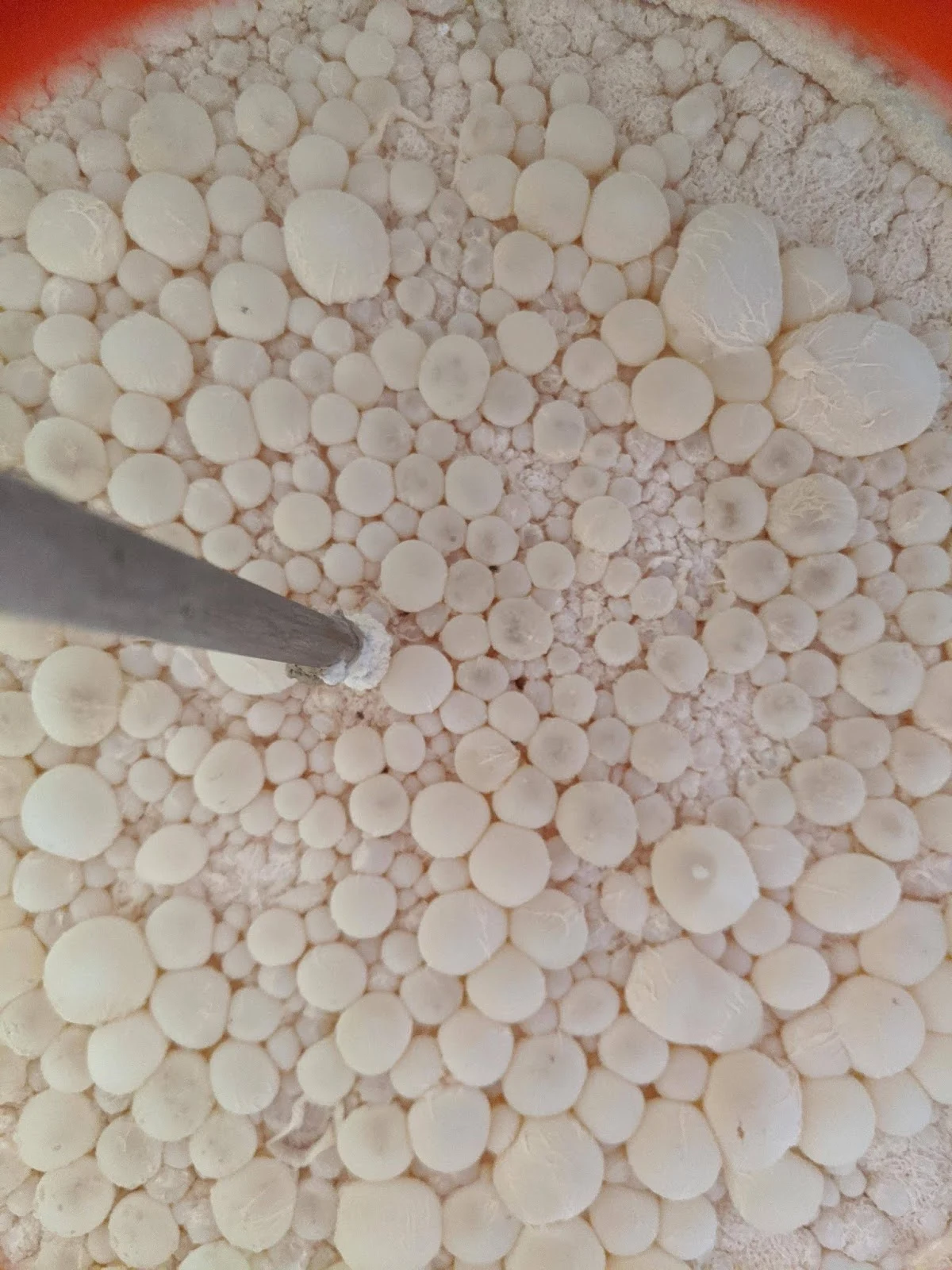Dead yeast floats to the bottom.
In this case, we speculate the yeast has simply clumped together after it has been pitched on top of the wort.
Bad luck skipper.
White film or flakes on top of the beer wort is fairly common and they form after the Krausen goes back to where it came from.
It's nothing to worry about.
This has happened to us before.
This has happened to us before.
We've chosen to leave it and day by day the clumps of yeast slowly disappear from the top - the yeast cells have probably got to work fermenting as they damn well should.
So, the advice here is that if your wort looks like this a day or two after pitching the yeast, there is nothing wrong with your batch of beer. All it needs a little bit of time to come right.
Beer infections, on the other hand, will look a bit different.
So, the advice here is that if your wort looks like this a day or two after pitching the yeast, there is nothing wrong with your batch of beer. All it needs a little bit of time to come right.
Beer infections, on the other hand, will look a bit different.
First up, ask yourself a question.
Despite what you may be observing floating on your beer, how does it smell?
If so, then yes, your beer is probably infected and you'll need to dump it.
But first, you have to taste it.
Is it rank?
Does it taste like some kind of demon that was juiced in a blender then left in the sun?
You gotta dump it.
Bad luck skipper.
But.
But.
But.
There are lots of things that can grow on the top of the wort that look less friendly than a simple yeast raft.
Like this abomination:
They are often referred to as pellicles.
They are usually harmless and when your beer is ready, you can simply bottle your beer.
You can avoid the pellicle going into your beer by racking into another drum or simply keeping an eye on the level of the remaining beer in the fermenter as you bottle. You can always siphon the beer under the pellicle into a secondary drum before you bottle or keg from that new one.
This may feel like a goods news post - there are ways however that you beer can become infected and thus undrinkable. Which serves as a constant reminder to sanitize your brewing equipment.
This may feel like a goods news post - there are ways however that you beer can become infected and thus undrinkable. Which serves as a constant reminder to sanitize your brewing equipment.



There are yeast strains that produce sulfur. Lager yeasts are famous for this, and it does not indicate an infection.
ReplyDeleteThe pellicle DOES indicate an infection, and the beer is going to go sour if it is left long enough.
Cheers!